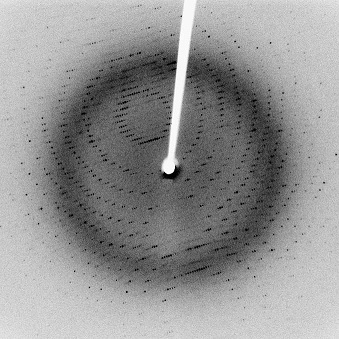
The equatorial diffraction profiles of polymer. The 13th IIR International Congress of Refrigeration (held in Washington DC in 1971) endorsed a universal definition of 'cryogenics' and 'cryogenic' by accepting a threshold of 120 K (or 153 C) to distinguish these terms from the conventional. The polymer specimen could be cooled down to 18 K using this apparatus. Thus, an in situ Xray diffraction study is conducted on three tool steels X38CrMoV53, X153CrMoV12, and X190CrVMo204 to shed light on microstructural evolution during cryogenic treatment and subsequent tempering. In physics, cryogenics is the production and behaviour of materials at very low temperatures. Furthermore, UV-Vis absorption spectroscopy confirms that Dm(6-4)photolyase is photoactive in the crystals, giving a green light to time-resolved SFX studies on the protein, which can reveal the structural mechanism of the photoactivated protein in DNA repair.ĭepartment of Chemistry and Molecular Biology, University of Gothenburg, Box 462, 405 30 Gothenburg, Sweden. X-ray diffraction imaging (XDI) experiments at cryogenic temperatures allows us to analyze the internal structures of frozen-hydrated biological cells and cellular organelles. An x-ray diffraction apparatus, consisting of a load cell, a stretching device, and a cryogenic cell, has been constructed to observe the mechanical deformation of the crystal lattice of polymers at cryogenic temperature. The structures agree with each other, indicating that the structural information obtained from crystallography at cryogenic temperature also applies at room temperature. The cryogenic structure was solved to 1.79 Å resolution using conventional X-ray crystallography. The crystallization and preparation conditions are also reported.
#CRYOGENIC TEMP XRAY DIFFRACTION SERIAL#
The room-temperature structure was solved to 2.27 Å resolution and was obtained by serial femtosecond crystallography (SFX) using an X-ray free-electron laser. Here, crystal structures of Drosophila melanogaster (6-4) photolyase at room and cryogenic temperatures are reported. The diffraction measurement at these doses, well above the Henderson/Garman limit and at room temperature, is only possible because the short X-ray pulses (< 50 fs) outrun the X-ray induced damage and the Coulomb explosion (42, 51). Their function is to repair DNA lesions using visible light. Competition from single-particle cryo-electron microscopy and micro-electron diffraction, increased interest in functionally relevant information that may be missing or corrupted in structures determined at cryogenic temperature, and interest in time-resolved studies of the biomolecular response to chemical and optical stimuli have driven renewe. (6-4) photolyases are flavoproteins that belong to the photolyase/cryptochrome family.

Citation, Usage, Privacy Policies, Logo.Biologically Interesting Molecule Reference Dictionary (BIRD) Dive into the research topics of New high- and low-temperature apparatus for synchrotron polycrystalline X-ray diffraction.


 0 kommentar(er)
0 kommentar(er)
